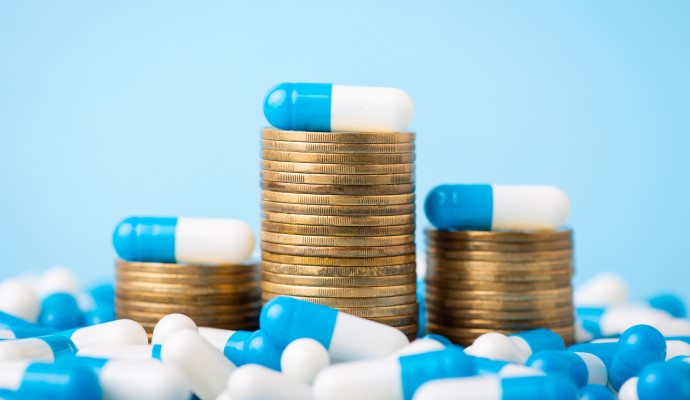340B Drug Pricing Program Eligibility Tied to Lower Biosimilar Use
The rate of biosimilar use was 11.8 percent among hospitals eligible for the 340B drug pricing program and 34.7 percent among non-eligible facilities.

Source: Getty Images
- Participation in the 340B drug pricing program was associated with reduced biosimilar use and more biologic administrations, a study published in Health Affairs found.
The 340B program allows eligible hospitals serving low-income populations to purchase discounted prescription drugs. Hospitals must have a disproportionate share hospital (DSH) percentage greater than 11.75 percent to qualify for the program.
340B hospitals receive discounts for purchasing drugs, but the administration of the drugs is reimbursed by Medicare at the same rate as for non-340B providers. This may incentivize hospitals to administer more expensive drugs for Medicare and avoid biosimilars, which Medicare typically reimburses at lower rates.
Researchers used outpatient claims from 2017 to 2019, data from the Healthcare Cost Report Information System database, and data from the 340B Office of Pharmacy Affairs Information System to determine whether the 340B program is associated with the use of biosimilars in hospital outpatient departments.
They looked at two biologics, filgrastim and infliximab, and their respective biosimilars, filgrastim-sndz and filgrastim-aafi and infliximab-dyyb and infliximab-abda.
The study sample included 55,970 administrations for 6,306 patients across outpatient departments at 593 general acute hospitals with DSH percentages within 10 percentage points of the eligibility threshold.
Biosimilar use significantly differed among hospitals just above the 340B threshold (eligible hospitals) and those just below the threshold (non-eligible hospitals). Adjusted biosimilar use was 34.7 percent among non-eligible hospitals and 11.8 percent among eligible facilities, translating to an adjusted discontinuity of 22.9 percentage points.
Relative to biosimilar use below the threshold, the discontinuity estimate indicates a 66 percent reduction in biosimilar use associated with 340B eligibility.
Drug administration varied among eligible and non-eligible hospitals, the study found. For example, hospitals just below the threshold had 17.3 drug administrations, while hospitals above the threshold had 30.6. Relative to the number of administrations below the threshold, this difference implies a 77 percent increase in administrations among 340B-eligible hospitals.
Non-eligible hospitals received $23,379 in Medicare reimbursement for filgrastim and infliximab administrations compared to the $41,298 eligible hospitals received, signifying a $17,919 or 77 percent increase in reimbursement.
The findings suggest that the 340B program could significantly drive lower overall biosimilar use in the US. The results also reinforce previous evidence that the profitability of medications can impact treatment decisions and the type of medication administered.
The Medicare Payment Advisory Commission (MedPAC) has proposed consolidating billing codes, which would ensure reference products and their biosimilars were reimbursed at the same rate based on the volume-weighted average sales price.
CMS reduced 340B payments by 22.5 percent in 2018 in an effort to align Medicare reimbursement with 340B drug discounts, but the study found the cut did not impact biosimilar use. The reduction was overturned by the Supreme Court in 2022.
However, 340B hospitals have faced a long road to repayment to make up for the unlawful cuts. In January 2023, a federal court ruled that HHS could determine how to repay the hospitals, much to the dismay of hospital groups.
“Our findings add to evidence supporting calls to reform the 340B program to abate incentives to provide more drugs and more high-reimbursement drugs, as well as to better support the goals of the 340B program to benefit low-income patients,” researchers wrote.
Reforms that limit eligibility to hospitals with higher DSH percentages could minimize the number of patients impacted by these incentives. Additionally, reforms that limit the use of discounted drugs to low-income patients could help avoid the drawbacks of the 340B program.
